Related Research Articles

Jumilla is a town and a municipality in southeastern Spain. It is located in the north east of the Region of Murcia, close to the towns of Cieza and Yecla. According to the 2018 census, the town population was 25,547.
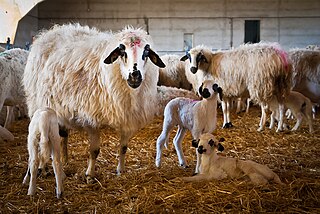
The Churra is an Iberian type, breed or group of breeds of sheep. The word churra simply means 'coarse-woolled'. The Churra originates in the Duero Valley in the autonomous community of Castile and León in north-western Spain. In the province of Zamora the milk is used to make Zamorano cheese.
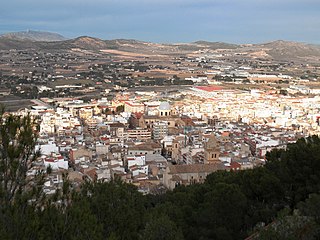
Yecla is a town and municipality in eastern Spain with 35243 people registered, in the extreme north of the autonomous community of Murcia, located 96 km from the capital of the region, Murcia.

Murcian is a variant of Peninsular Spanish, spoken mainly in the autonomous community of Murcia and the adjacent comarcas of Vega Baja del Segura and Alto Vinalopó in the province of Alicante (Valencia), the corridor of Almansa in Albacete. In a greater extent, it may also include some areas that were part of the former Kingdom of Murcia, such as southeastern Albacete and parts of Jaén and Almería.
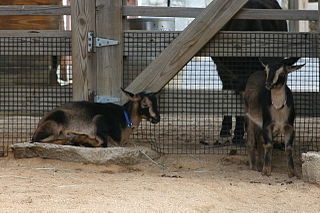
The San Clemente Island goat is a type of domestic goat derived from feral goats isolated on San Clemente Island, one of the Channel Islands of California.
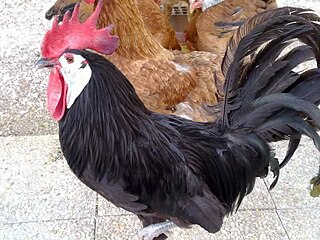
The Spanish or White-faced Black Spanish, Spanish: Cara Blanca or Española Cara Blanca, is a breed of domestic chicken which originated in Spain, but was largely bred to its present type in Great Britain in the eighteenth century. It is an older breed than the Minorca. It is distributed throughout the world, but is rare in Spain.
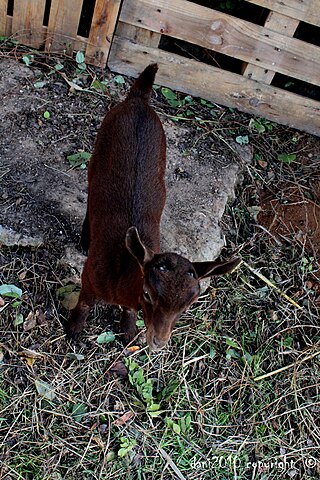
The Murciano-Granadina is a Spanish breed of dairy goat. It was created in 1975 when two existing breeds, the mahogany-coloured Murciana of Murcia and the black Granadina of Granada, began to be hybridised as a result of the official recognition of a single herdbook including both breeds. It is the most important dairy goat breed of Spain, with more than 500,000 milking females. It originated in the semi arid areas in south eastern Spain, including parts of Murcia, Almería, Granada and Alicante. They were bred for two main traits, milk production and its ability to continue this production in dry and nutrient poor regions. They have been introduced into several areas in Latin America as well as northern Africa.
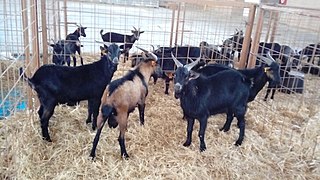
The Verata is a traditional Spanish breed of domestic goat. It is a dual-purpose breed, reared both for its meat and for its milk. It is named for, and is thought to originate in, the comarca of La Vera, in the province of Cáceres, in the northern part of the autonomous community of Extremadura in western central Spain. It is one of two traditional goat breeds in Extremadura, the other being the Retinta Extremeña.
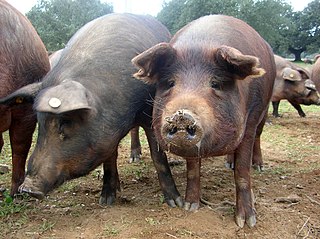
Extremadura, Spain is known for its different ways of preparing the Iberian pork and mutton. The main characteristics of the traditional Extremaduran cuisine are its simplicity, its lack of clutter and its low cost. It is also a cuisine reflecting a generous spirit, for many of its preparations used to be cooked in large pots to share with visitors, friends, and neighbors. The resulting dishes are eaten with local bread.

There are a number of Basque breeds and cultivars. These are domesticated animals that have been bred - or plant species cultivated - for particular traits and features by Basque people in the Basque Country.

American Lamancha, or more commonly, simply Lamancha or LaMancha, is a formally recognized breed of dairy goat, first bred in California by Mrs. Eula Fay Frey about 1927. Later she moved the herd to Glide, Oregon for further development. The Lamancha goat is a member of the Capra genus, specifically Capra aegagrus hircus, like all domestic goats.
The American Dairy Goat Association or ADGA is a United States not-for-profit corporation dedicated to dairy goats. Its purpose is to promote the dairy goat industry, by providing and circulating sound information about goats and goat's milk; maintaining and publishing herd books and production records of milk goats; and issuing certificates of registration and recordation; improving and developing the milk goat breeds; and providing publicity and service for the goat dairying industry. The principal operation of the corporation is in Columbia, Missouri, and its headquarters are in Spindale, North Carolina.
The Pasiega is a traditional Spanish breed of red dairy cattle from the autonomous community of Cantabria in northern Spain. It originated in the Valles Pasiegos in south-eastern Cantabria. The name derives from that of the Pas River, which flows through that region. Because of the colour of its coat it may also be known as the Roja Pasiega or Rojina.
The Ratonero Murciano is a breed of dog from the Spanish Region of Murcia. The Ratonero Murciano was traditionally kept in Murcia as a mouse and rat hunter, it is claimed they descend from dogs introduced to the region by the Romans who imported them from Egypt. In 1997 a breeding program was established to save the breed, by 2009 the program was up to its third generation, with 80 breeding specimens and a DNA testing program.
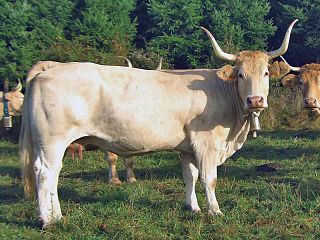
The Pirenaica, Basque: Behi-gorri, is a breed of beef cattle indigenous to the Pyrenees of north-eastern Spain. It is distributed mainly in the autonomous communities of Navarre and the Basque Country, but is present in much of the northern part of the country. It is well adapted to the mountainous terrain and humid climate of the area. It came close to extinction in twentieth century, but is not now at risk.

The Manchega is a breed of sheep native to the La Mancha region of Spain. The Manchega is most famous for producing the milk that is used to produce Manchego cheese, a very popular Spanish sheep's milk cheese.
Granadina is a Spanish breed of goat. It is one of the olderst livestock breeds of Spain, being mentioned in 15th century sources. Its milk-producing characteristics were documented in 1893 and it was officially recognized in 1933. However, since 1975, it is considered a variety of the Murciano-granadina goat, which is a cross between the Murciana goat and the Granadina goat. Only the Murciano-granadina breed is officially recognized by the Government of Spain. Murciano-granadina goats have become the primary milk-producing goat breed in Spain, while the Granadina variety is rare. Its first germplasm bank was created in 2010 to combat its loss of genetic diversity.

Cañada de la Cruz is a small village of Spain, belonging to the municipality of Moratalla, in the Region of Murcia.
References
- ↑ Amundson, Carol A. (2009), How to Raise Goats (illustrated ed.), Voyageur Press, pp. 12–13, ISBN 978-0-7603-3157-6
- 1 2 3 4 5 Frey, Mrs. Eula Fay (January 1960), How American La Manchas Came to Be, Dairy Goat Journal
- 1 2 Cortés Espinosa, Silvia (2010). "Creación del banco de germoplasma de la cabra granadina [Germplasm bank of the Granadina goat population]" (PDF). Abstracts for the 10th International Conference on Goats, Brazil. Universidad de Córdoba. Retrieved 2 October 2019.
- ↑ Tejerina Ampudia, Fernando. "Raza caprina MURCIANO-GRANADINA". Ministerio de Agricultura, Pesca y Alimentación. Retrieved 2 October 2019.
- 1 2 3 Frey, Mrs. Eula Fay (1960), How American Lamanchas Came In To Being, Dairy Goat Journal, archived from the original on 2010-09-24, retrieved 2010-07-20
- ↑ Pegler, H. S. Holmes (2008), The Book of the Goat - Containing Full Particulars of the Various Breeds of Goats and Their Profitable Management (5, illustrated ed.), READ BOOKS, pp. 162–163, ISBN 978-1-4437-3759-3
- ↑ Tachera, S. (January 1975), As I See the American LaMancha, Dairy Goat Journal, archived from the original on 2001-03-10, retrieved 2010-07-20
- ↑ European Association for Animal Production (1978), "Ruminant production in the dry subtropics: constraints and potentials", EAAP Publication (38), Butterworths: 68, ISBN 978-90-220-0949-9
- 1 2 Dohner, Janet Vorwald (2001), The encyclopedia of historic and endangered livestock and poultry breeds, Yale agrarian studies (illustrated ed.), Yale University Press, p. 36, ISBN 978-0-300-08880-9
- ↑ Smith, Cheryl K. (2010), Raising Goats For Dummies, For Dummies, pp. 37–38, ISBN 978-0-470-56899-6